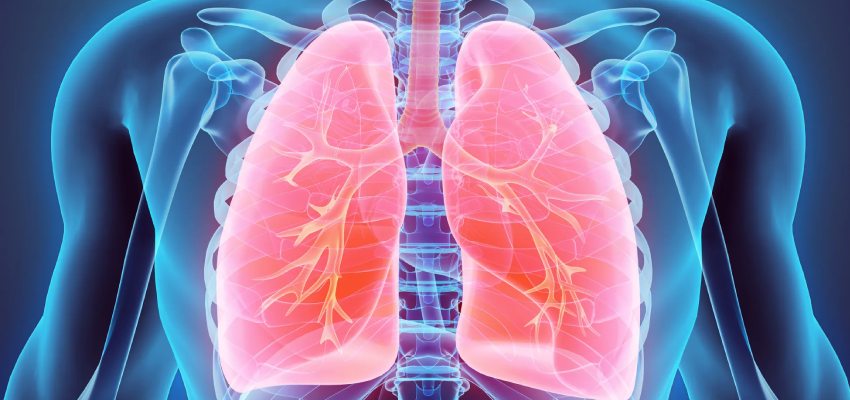Welcome to our comprehensive guide on managing lung congestion. If you’ve ever experienced that uncomfortable feeling of tightness and heaviness in your chest, you know how distressing it can be.
Whether it’s due to a cold, allergies, or other factors, lung congestion can greatly affect your daily life and well-being.
Your lung health is crucial, and taking proactive steps to manage congestion can make a significant difference in how you feel and breathe. So, let’s dive in and empower you with the knowledge you need to tackle lung congestion head-on and regain your comfort and vitality.
Understanding Lung Congestion
The term “lung congestion” describes the buildup of extra fluid or just mucus in the connective tissues of the lungs and airways, which makes breathing challenging and causes discomfort.

Colds, infections of the respiratory tract, allergies, and long-term lung problems are frequently linked to it. In order to manage and address the underlying causes of lung congestion effectively, an adequate comprehension of the condition is essential.
Also read about – Fatty liver grade 2
Lung congestion: What causes it?
Lung congestion can be caused by several things:

- Infections with bacteria or viruses can inflame the respiratory tract and increase the formation of mucus, which would congest the airways and block them.
- An immunological response in the respiratory system is brought on by allergic reactions to pollen, dust mites, and pet dander, which results in inflammatory conditions, overproduction of mucus production, and congestion.
- As the body fights the illness, colds and the flu can irritate the airways, produce mucus, and congest them. This can result in coughing and breathing difficulties.
- Asthma is a chronic disorder marked by inflamed airways that, during flare-ups, can restrict and generate too much mucus, causing congestion and breathing problems.
- Chronic obstructive pulmonary disease (COPD), which includes chronic bronchitis and emphysema, is characterized by permanent harm to the lungs that causes persistent congestion, coughing, and diminished lung function.
- As a result of the buildup of fluid in the lungs that characterizes heart failure, the lungs can become severely congested, which can cause severe shortness of breath.
Read about – How to cure gastric problem immediately
When Congestion Might Indicate an Underlying Issue
While respiratory infections, allergies, and common colds are frequently to blame for congestion, persistent or repeated lung congestion may indicate a more serious condition.

Knowing whether your symptoms are unusually severe and might need more testing is crucial.
Chronic Conditions Related to Lung Congestion
Several chronic conditions are associated with persistent lung congestion. These conditions can range in severity, and early identification is crucial for effective management:
- The chronic bronchitis and emphysema that make up COPD damage the airways, causing lung congestion, wheezing, and shortness of breathing to continue.
- Lung congestion is a common symptom of asthma attacks, which are characterized by recurrent episodes of wheezing, dyspnea, chest tightness, and coughing.
- The symptoms of pulmonary edema, which is caused by fluid buildup in the lungs as a result of cardiac issues, include significant breathing difficulties, a rapid heartbeat, and excessive lung congestion.
- A lung infection known as pneumonia can result in severe lung congestion, a high body temperature and a strong cough.
- Scarring of the lung tissue is a characteristic of interstitial lung disease, which causes decreased lung function, ongoing congestion, and breathing difficulties.
Here is obsessive compulsive disorder.
When to Seek Medical Attention
Lung congestion, a chest sensation of heaviness or tightness, can be mildly manageable at home. However, in severe cases, medical attention is crucial for health and well-being, requiring prompt identification and treatment.

Here’s an expanded explanation of when to seek medical attention for lung congestion:
- Persistent or Worsening Symptoms
- Shortness of Breath
- High Fever
- Chest Pain
- Change in Mucus Colour
- Weakness and Fatigue
- Pre-existing Conditions
- Vulnerable Populations
- Sudden Onset
Also, The Common Symptoms:
Recognizing the symptoms of lung congestion is important for early intervention and proper management. Common symptoms include:
- Coughing
- Shortness of Breath
- Wheezing
- Chest Discomfort
- Excess Mucus Production
- Fatigue
Also consider reading the ovarian cyst.
Home Remedies for Lung Congestion
Lung congestion home remedies:
Lung congestion, which is frequently accompanied by illnesses like the flu, allergies, colds, or infections of the respiratory tract, can make breathing uncomfortable.

In severe cases, medical intervention may be required, but there are several reliable at-home therapies that can help reduce congestion and support better respiratory health.
Hydration: The Value of Water Consumption:
Because it keeps the body functioning normally, decreases mucus in the respiratory system, and supports the defences of the immune system against infections, maintaining appropriate water is essential for managing lung congestion.
The Health Benefits of Steam Inhalation:
By breathing in warm, wet air, the inhalation of steam is a quick but efficient way to reduce lung congestion. Breathe deeply for five to ten minutes while immersed in hot water. Increase the advantages by including essential oils.
Utilizing humidifiers:
For respiratory health, to relieve inflamed airways, and to promote mucus clearance, it is essential to maintain ideal humidity levels in living environments, but proper maintenance and upkeep are also necessary.
Elevation During Sleep:
When you sleep, elevating your upper body helps ease lung congestion, particularly when it’s brought on by persistent postnasal drip or mucus accumulation, and it can also stop you from coughing and feeling uncomfortable.
You should also know – How to clean lungs
Conclusion
In conclusion, managing lung congestion is a vital aspect of maintaining your overall well-being and comfort. Whether you’re grappling with the discomfort caused by allergies, infections, or chronic respiratory conditions, understanding the underlying causes and symptoms of lung congestion is the first step towards effective management.
In the journey to conquer lung congestion, knowledge is your greatest ally. By staying informed about the causes, symptoms, and available remedies, you can take proactive steps to regain control of your breathing, reduce discomfort, and ultimately enjoy a better quality of life. Remember, your lung health matters, and with the right strategies, you can breathe easier and experience the vitality you deserve.
Consider reading –
- Cancer Treatment In Ayurveda
- Angiography vs Angiogram
- Stomach Pain Tablets List In India
- Ayurvedic Treatment for Piles and Fissures